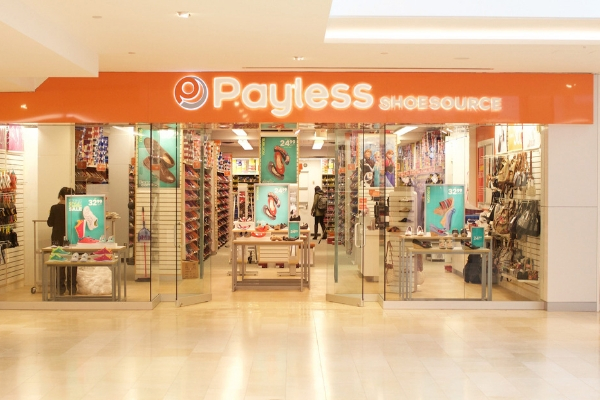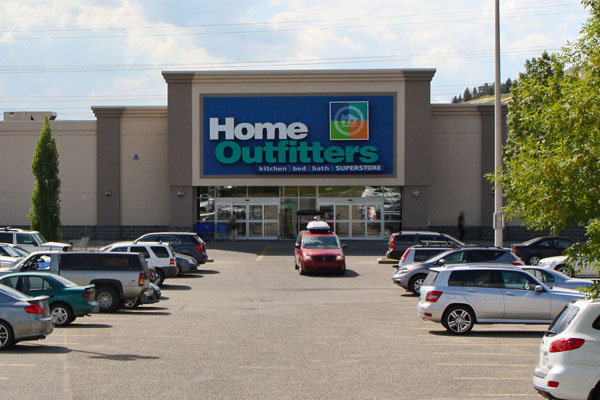Sadly, the North American retail scene has been characterized by big, bold “bankrupt” headlines as of late.
You can blame it on the rise of online shopping, a lack of consumer dollars or a culture that now values experiences over material things. But the reality is that an impossible-to-ignore number of retailers have filed for bankruptcy.
However, bankruptcy doesn’t always mean the nail is in the coffin – far from it for some retailers, in fact.

Not only have they survived to tell the story, many have actually managed to come back from the dead stronger and healthier than they’d been in a long time.
For some brands, filing for bankruptcy is actually an opportunity.
Declaring bankruptcy obviously isn’t a great look – we can all agree on that. But it can offer a chance for companies to reevaluate, restructure, and revise its debt payment giving a fresh start, if you will.
Consider the case of a handful of major airlines: American Airlines, Delta Airlines, and United Airlines have all filed for bankruptcy in recent years.
These companies are clearly still very much in business and thriving (aside from the odd well-publicized customer service nightmare). Other big name brands who have declared themselves bankrupt include giants like General Motors and Kmart.

So, how is it possible that they are still very much in business? It’s called Chapter 11. This is something companies may opt for if the long-term revenues will be higher than liquidating all assets.
Permanently shuttering businesses, after all, is a major deal: not only does it diminish any of its potential, it could result in thousands of layoffs, setting off a rippling effect when it comes to supply chains.
In Canada, the equivalent of Chapter 11 is called a Division I Proposal or a CCAA filing. As most brands that have been successful in staying alive are American, I refer to it as Chapter 11 for relevance sake.
In a Chapter 11 bankruptcy, the failing company has the opportunity to propose a reorganization plan to restructure its debts and obligations to save their struggling brand.

This can work in few different ways; a company could opt to downsize operations to reduce overhead expenses, work out a payment plan with creditors, or renegotiate debts or liquidate assets to repay creditors.
In a Chapter 11 case, the bankrupt business becomes a “debtor in possession” and is free to carry on business as usual when it comes to continuing regular operations and maintaining control and ownership of their assets.
Not surprisingly, however, the company can only make regular sales and purchases that are part of its typical operations; it can’t do anything drastic like purchase a company, sell company assets or expand or contract business operations without approval from the court.

In many modern Chapter 11 retail cases, a struggling company ends up selling its intellectual property like customer databases, copyright-protected design systems, and a brand name to another company.
A well-known example of a brand that resurfaced from — what loyal customers thought was the dead — is American Apparel. When the retail chain filed for bankruptcy in 2016 and closed up shop. The closing was much to the dismay of costume party-lovers and teenyboppers everywhere, and Gildan Activewear bought its intellectual property. While the physical stores may be a thing of the past aside from a Los Angeles-based flagship, American Apparel lives on though its online shop thanks to its new(ish) parent company.
Like trying to repair a broken relationship, sometimes attempts to reorganize and revitalize under Chapter 11 aren’t always successful – and it can get messy, as these are the most complex of all bankruptcies.

It’s also pricey. For some brands, liquidation and closing operations permanently may be the best option. Most notably, if their liquidation value is higher than its earning potential. Of course, in this case a trustee appointed by the court sells off the company’s assets to pay off its creditors.
When it comes to the shuttering of some beloved retailers, however, don’t get your hopes up that they too will live on. Some stores – like Town Shoes and Home Outfitters – are, sadly gone for good. May they rest in peace.
Featured Image: Pixabay
Articles You May Be Interested In:
Gap Just Announced The Closing Of 230 Stores In Canada And The U.S
The Running List Of Retail Store Closures And Bankruptcies In 2019
Hudson’s Bay Co. Announced Closure of All Home Outfitters Stores, Could Saks Off Fifth Be Next?
Payless Will Be Closing All Of Its Canadian Locations
Gymboree Is Closing All Of Its Stores Across Canada
